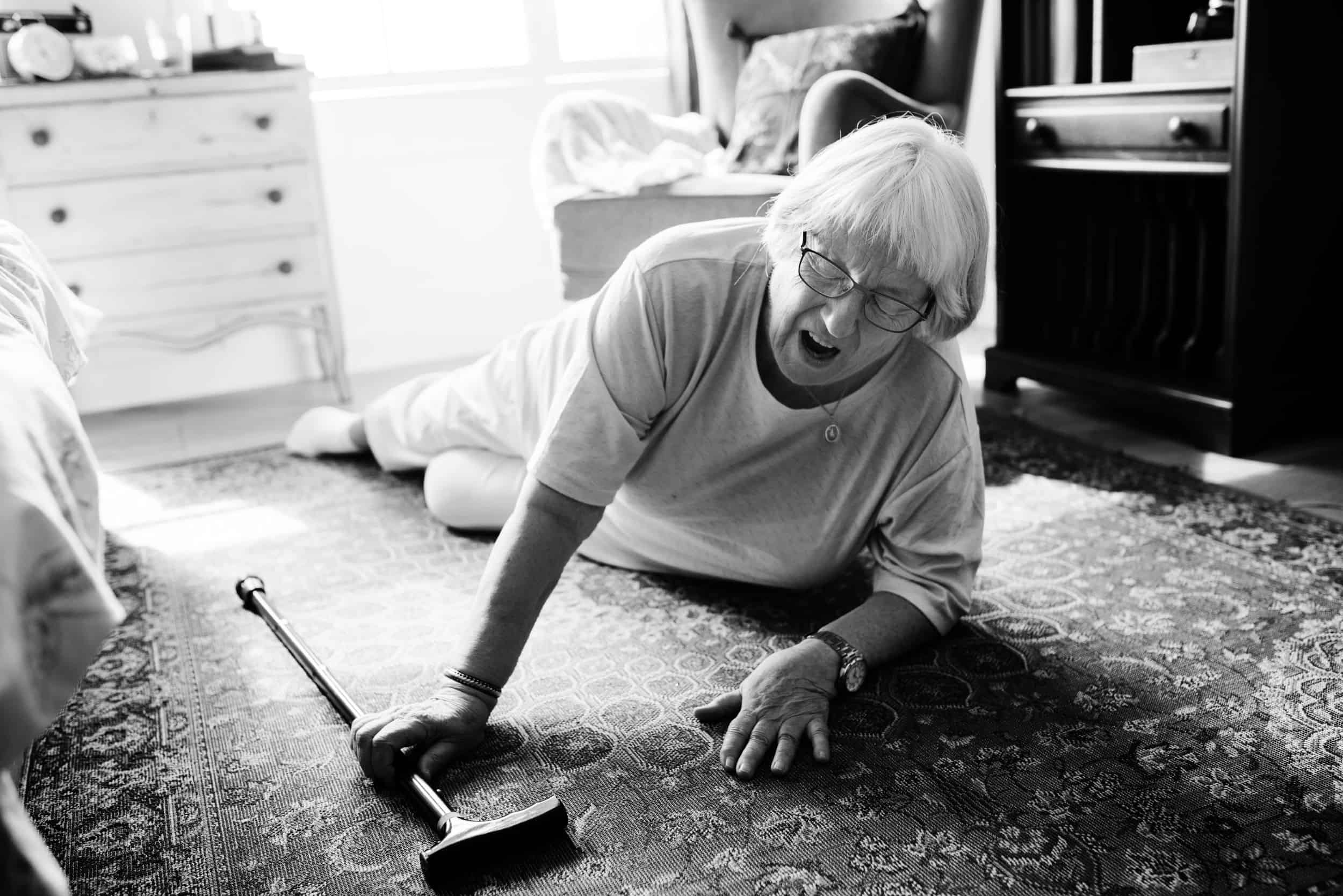You might not feel ready to think about the challenges that come with getting older. Many assume they’ll figure it out when the time comes. But if aging in place – remaining in your home – is how you expect to spend your golden years, you’ll need to make a plan.
A plan for aging in place doesn’t guarantee you won’t one day require 24-hour care in a nursing home or assisted-living facility.
It does, however, put resources in place that anticipate common reasons why older people struggle to live independently. It creates an environment with as few obstacles as possible to living at home for as long as possible.
Those obstacles include:
- Environment – Aspects of your home’s design that may be difficult to navigate as you get older, objects that may become too difficult to manipulate, etc.
- Physical/Mental Health – Common symptoms of aging that limit mobility, strength, the physical senses and cognition.
- Safety – Increased risk of emergency situations you may one day not be able to handle independently.
If you already have a mobility impairment, these risk factors may become serious sooner than later. Thankfully, many of these obstacles to remaining in your own home can be overcome if you start preparing now for aging in place.
Here are a few strategies you can explore today, including preventing serious injury with the fall-safe upright mobility aid, the LifeGlider.
Universal Design
There are many ways to address problems related to home accessibility, or your ability to move through it regardless of any current or future disability, through universal design.
This architectural concept is centered on the idea that living spaces should be accessible for everyone and their mobility device. Some examples include:
- A single story so you don’t have to deal with stairs.
- Doorways are wide enough for wheelchairs.
- Base cabinets are raised so you don’t have to reach down very far.
- Pull-out cabinets bring items out so you don’t have to reach into them.
- ADA-compliant appliances support seated access (e.g. allowing for knee space).
Not everyone can afford to build a custom home around universal design, but moving into an existing single-story home is a good start. You could then remodel it to support aging in place.
Arthritis-Friendly Products
In the U.S., 23 percent of all adults have arthritis. The symptoms of pain, aching, stiffness and swelling in and around the joints often starts during working years, but around 40 percent will develop arthritis at age 65 or older.
This means that it’s a good idea to start investing in arthritis-friendly products as you approach retirement age. Without them, people with joint pain find it increasingly painful and difficult to do many activities of daily living necessary to take care of themselves.
Here are a few examples of products and how they help:
- Automatic jar or can openers remove the burden of squeezing and twisting lids or a manual can opener crank.
- Carrier handles have a soft grip with a large hook, allowing you to pick up and carry bags without them digging into your fingers and palms.
- Button assist tools make it easier to pull buttons through their corresponding holes.
- Thick-handled cutlery is easier to grasp than standard spoons, folks and knives.
- Dressing sticks extend your reach to help with putting on articles of clothing with an S-hook, such as jackets, or shoes with a shoehorn fixture.
You may find learning to use tools like these useful even if you don’t develop arthritis, as they are helpful for anyone who struggles with coordination, lacks hand strength, etc.
Medical Alert Systems
People often transition out of their home and into an assisted living facility because of the emergency support the facility provides.
They may be mostly independent, but the risk of an emergency event such as a fall is great enough that they no longer feel safe living on their own.
While this may be necessary in many cases, there are many in-home technologies you can invest in to prepare for emergency scenarios. These may enable you to remain in your home indefinitely.
Medical alert systems are wearable devices connected to a network that communicates with health professionals in the event of an emergency. Some features include:
- A button you can press to reach an emergency dispatcher.
- Home-based (connected to wi-fi/landline) or mobile (connected to a cellular network).
- The option to pay for a 24/7 monitoring service which may provide check-ins, etc.
- An option for automatic fall detection.
Systems like these can provide a lot more security than a cell phone can provide because you wear the device, the response can be automatic, and support is available around the clock.
If aging in place is your goal and you’ve developed a medical condition that puts you at risk of an emergency, or you’re starting to get unsteady on your feet, it may be time to think seriously about a medical alert system.
Exercise
One of the most effective ways to prevent the loss of independence is consistent physical activity.
This is because inactivity, or a sedentary lifestyle, is a leading cause of disease and disability. Some of the common consequences of long-term inactivity include:
- High cholesterol, putting strain on your heart
- Loss of muscle strength and endurance
- Bone density loss
- Weakened immune system
- Poor blood circulation
- Chronic inflammation (pain, redness or swelling)
Any one of these effects can threaten your independence as you age. Combined, they significantly increase the risk that you will need assistance with daily living or develop a medical condition that requires full-time professional care, often due to a serious injury caused by a fall.
Exercise is a sort of universal antidote. Regular, moderate exercise to the best of your ability is beneficial for many reasons:
- Walking and other aerobic exercise lowers “bad” (LDL) cholesterol, improving heart health
- Resistance training (weightlifting or floor exercises) helps maintain muscle mass and stability
- Movement helps you maintain flexibility while encouraging good blood circulation
- Exercise stimulates the immune system while regulating inflammation
It doesn’t take as much time or intensity to get these benefits as many people think. Even one 20-minute session of moderate exercise such as brisk walking can stimulate the immune system.
In general, at least 30 minutes of moderate physical activity is recommended per day to avoid the dangers of sedentary life. But it’s also important to choose activities that are safe for you. It’s a good idea to consult with your doctor before starting any new exercise routine.
Of course, if you have a mobility impairment, you will need a mobility aid that supports walking and other moderate exercise so you can do it safely.
The LifeGlider Supports Aging In Place
Getting around the house may become more challenging as you age. Cooking, cleaning, even standing at the bathroom sink are examples of daily activities that get more difficult or more painful, threatening your ability to take care of yourself.
The LifeGlider is designed with these obstacles in mind. It supports your goal of aging in place by:
- Helping you remain on your feet to avoid the risk of sedentary living.
- Encouraging upright walking to help you maintain core muscle strength.
- Supporting moderate exercise to help you stay healthy.
Most importantly, it is built to prevent falls.
Serious injury due to falls is one of the most common reasons people have to either move into a professional care facility or hire a costly home health service. This is why the LifeGlider may be one of the most effective devices to support aging in place.
There are many other aging in place strategies you could explore, from meal delivery and housekeeping services to financial planning and more. For professional advice, you may want to reach out to your local Area Agency on Aging (AAA) or explore other resources.
To learn more about the LifeGlider, contact us today.



